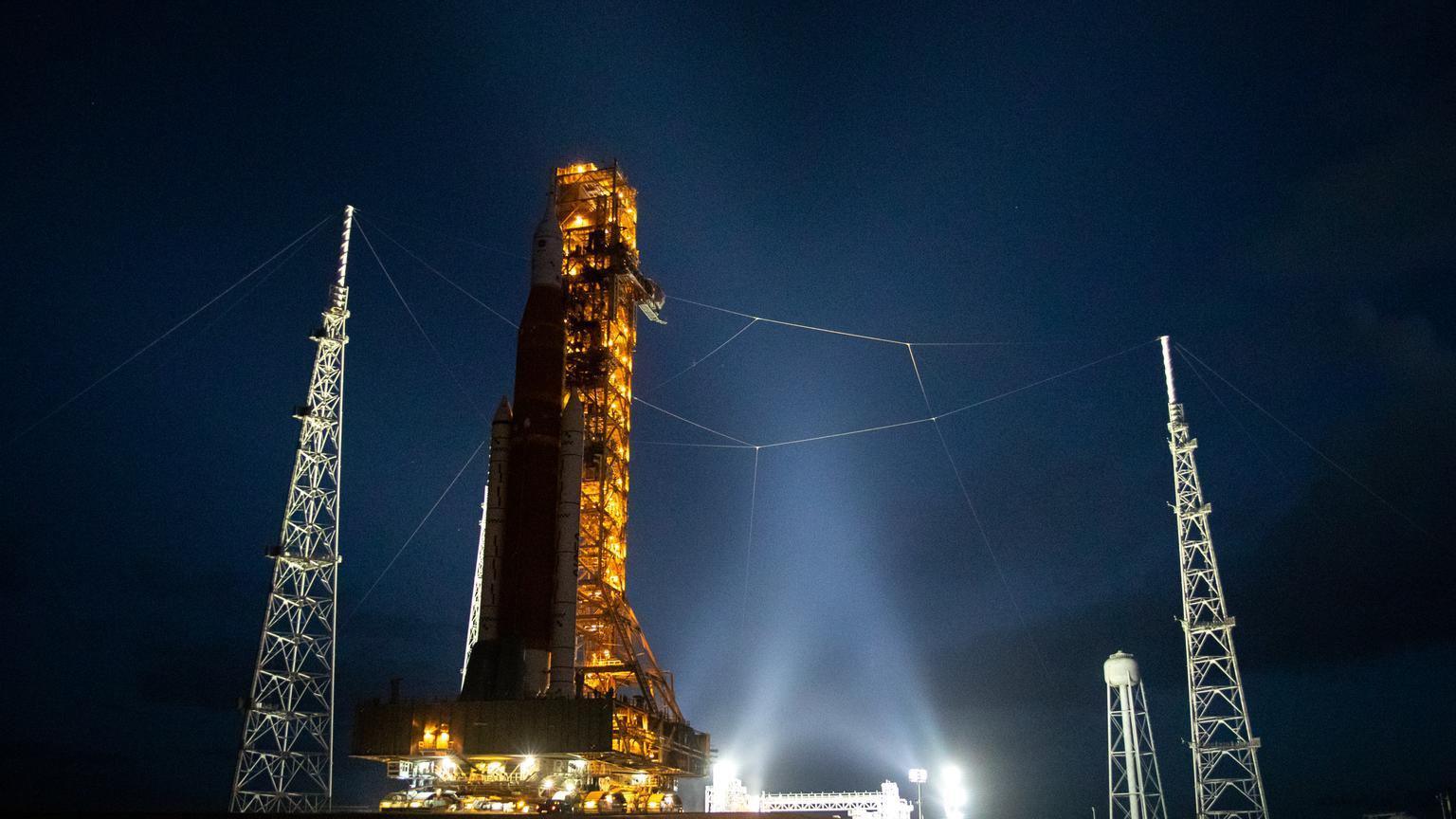Nasa delays astronaut flight around the Moon

Left to Right: Nasa astronauts Reid Wiseman, Victor Glover, Christina Hammock Koch and Jeremy Hansen. Their mission around the Moon is now delayed until April 2026
- Published
US space agency Nasa has announced a further delay to its plans to send astronauts back to the Moon.
The agency's chief, Bill Nelson, said the second mission in the Artemis programme was now due for launch in April 2026.
The plan had been to send astronauts around the Moon but not land in September 2025. The date had already slipped once before, from November of this year.
That will mean that a Moon landing will not take place until at least 2027, a year later than originally planned.
The delay is needed to fix an issue with the capsule's heat shield, which returned from the previous test flight excessively charred and eroded, with cracks and some fragments broken off.
Mr Nelson told a news conference that "the safety of our astronauts is our North Star".
"We do not fly until we are ready. We need to do the next test flight, and we need to do it right. And that's how the Artemis programme proceeds."

The Orion Crew module's heat shield was excessively damaged after its test flight in 2022
Mr Nelson said that engineers had got to the root of the problem and believed that it could be fixed by changing the trajectory of the capsule's re-entry – but it would take time to carry out a thorough assessment.
Nasa is in a race with the Chinese space agency, which has its own plans to send astronauts to the Moon. Mr Nelson said he was confident that the Artemis programme would reach the lunar surface first, but he called on Nasa's commercial and international partners to "double down to meet and improve this schedule".
"We plan to launch Artemis 3 in mid-2027. That will be well ahead of the Chinese government's announced intention that they have already publicly stated is 2030."

Nasa's Space Launch System (SLS) rocket and Orion spacecraft have been criticised for being expensive and slow to develop
The added delay, however, will increase the pressure on government-run Nasa – whose rocket system for sending astronauts to the Moon, the Space Launch System (SLS), has been criticised as being expensive and slow to develop.
This is in stark contrast to Elon Musk's private sector firm, SpaceX, which is surging ahead in its efforts to build its own, eventually much cheaper and reusable Starship rocket.
The nomination of Jared Isaacman by President-elect Donald Trump to take over from Mr Nelson as Nasa's head has added to growing concerns that big changes are in store for Nasa's Moon programme.
Mr Isaacman is a billionaire and close collaborator with Mr Musk, who has paid for two private sector missions which have taken him to space. His entrepreneurial approach might prove a shock to Nasa's system, according to Dr Simeon Barber, a space scientist at the Open University.
"SLS is an old-school rocket. It is not reusable like Starship, hence very expensive, and it has taken a long time to get it operational. And slow and expensive is a precarious position to be in when the incoming president, we expect, is looking to save costs.
"Isaacman is going to bring a new pair of eyes over how Nasa operates. And it's hard to predict what this combination of Isaacman, Musk and Trump might mean for Nasa as we know it."
Astronaut Sunita Williams, who remains in space after Boeing's new Starliner capsule was unable to return with her and Barry "Butch" Wilmore six months ago, called into a school in the US to show students how they drink liquids in zero-gravity